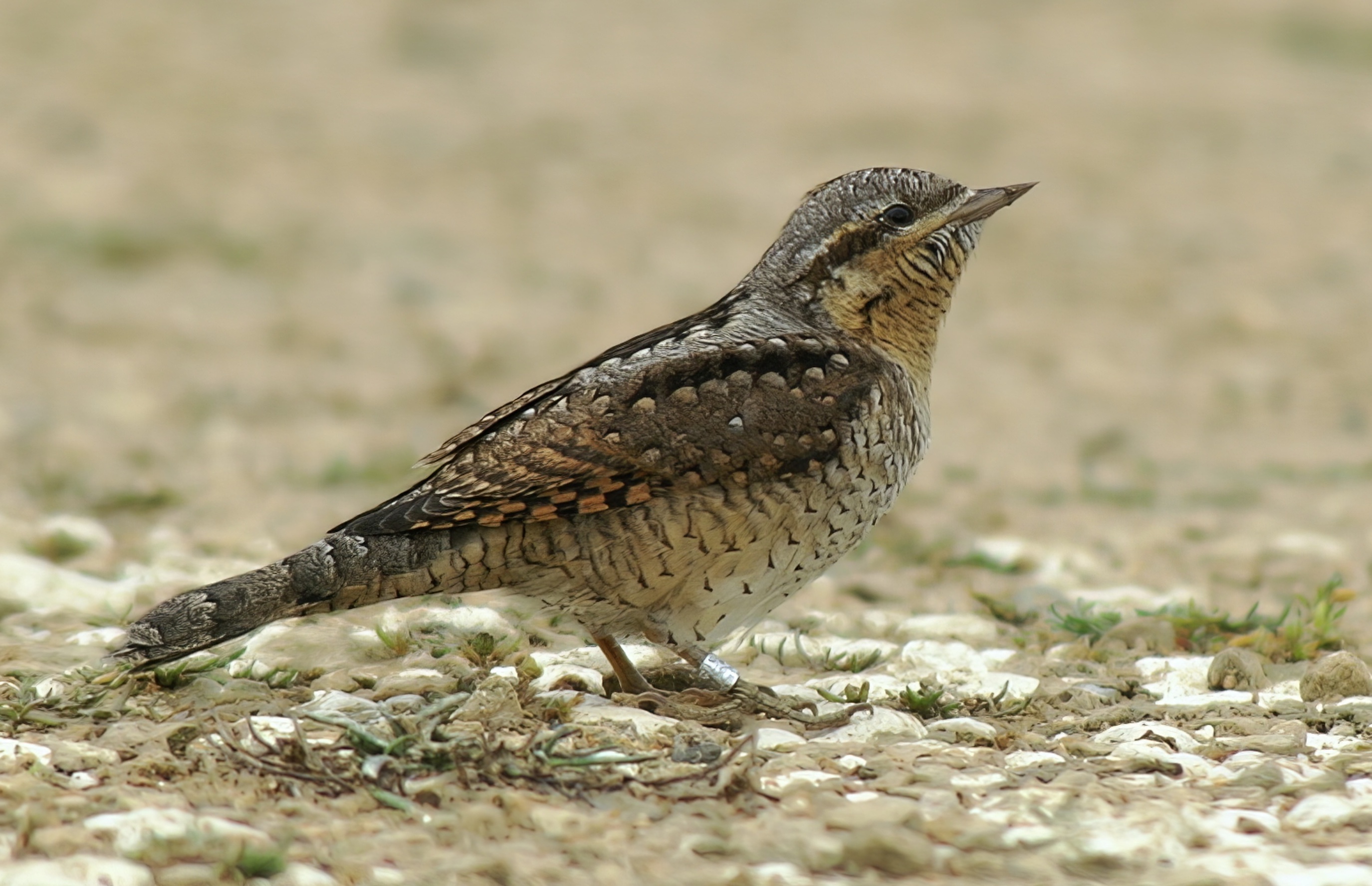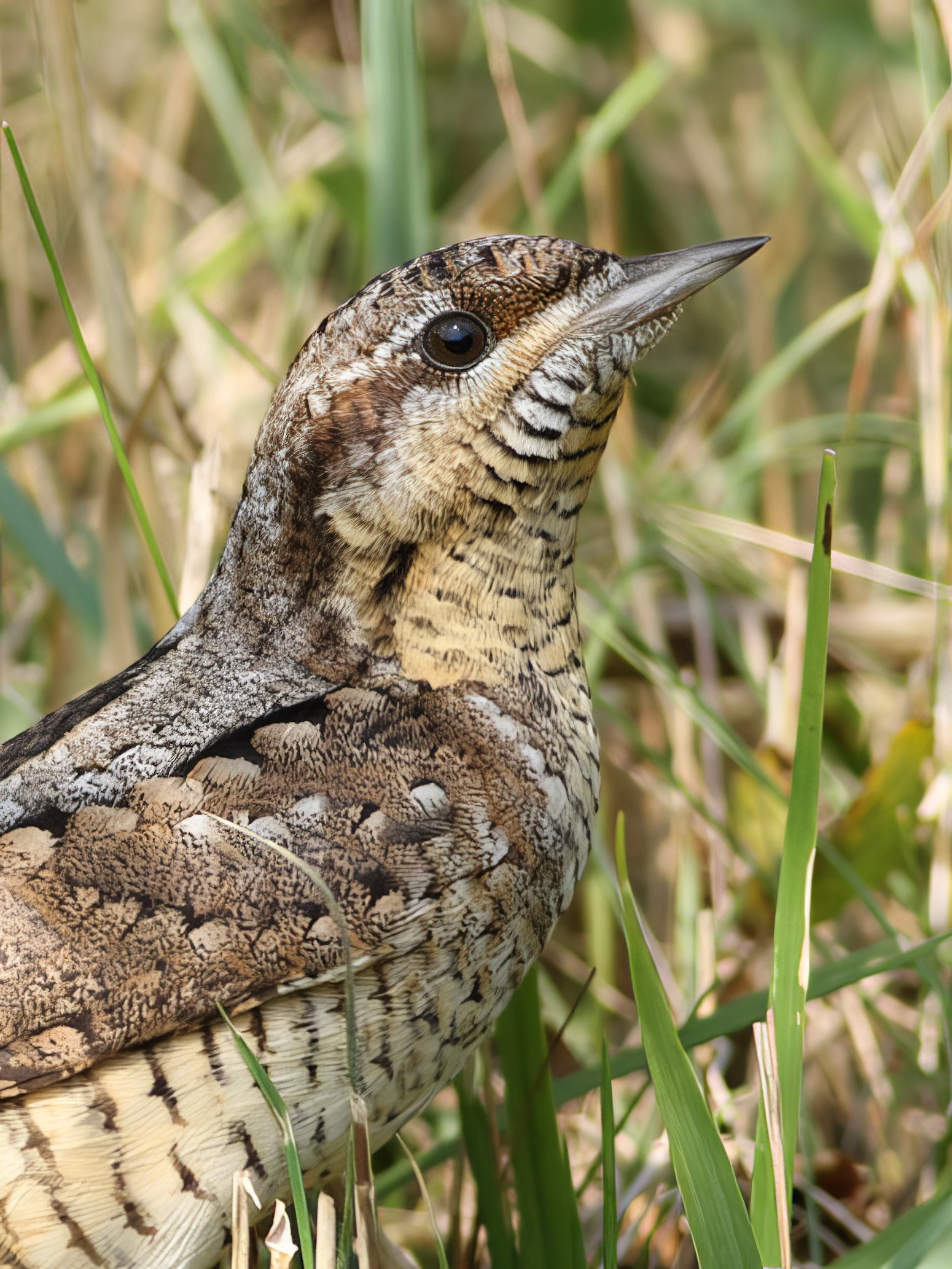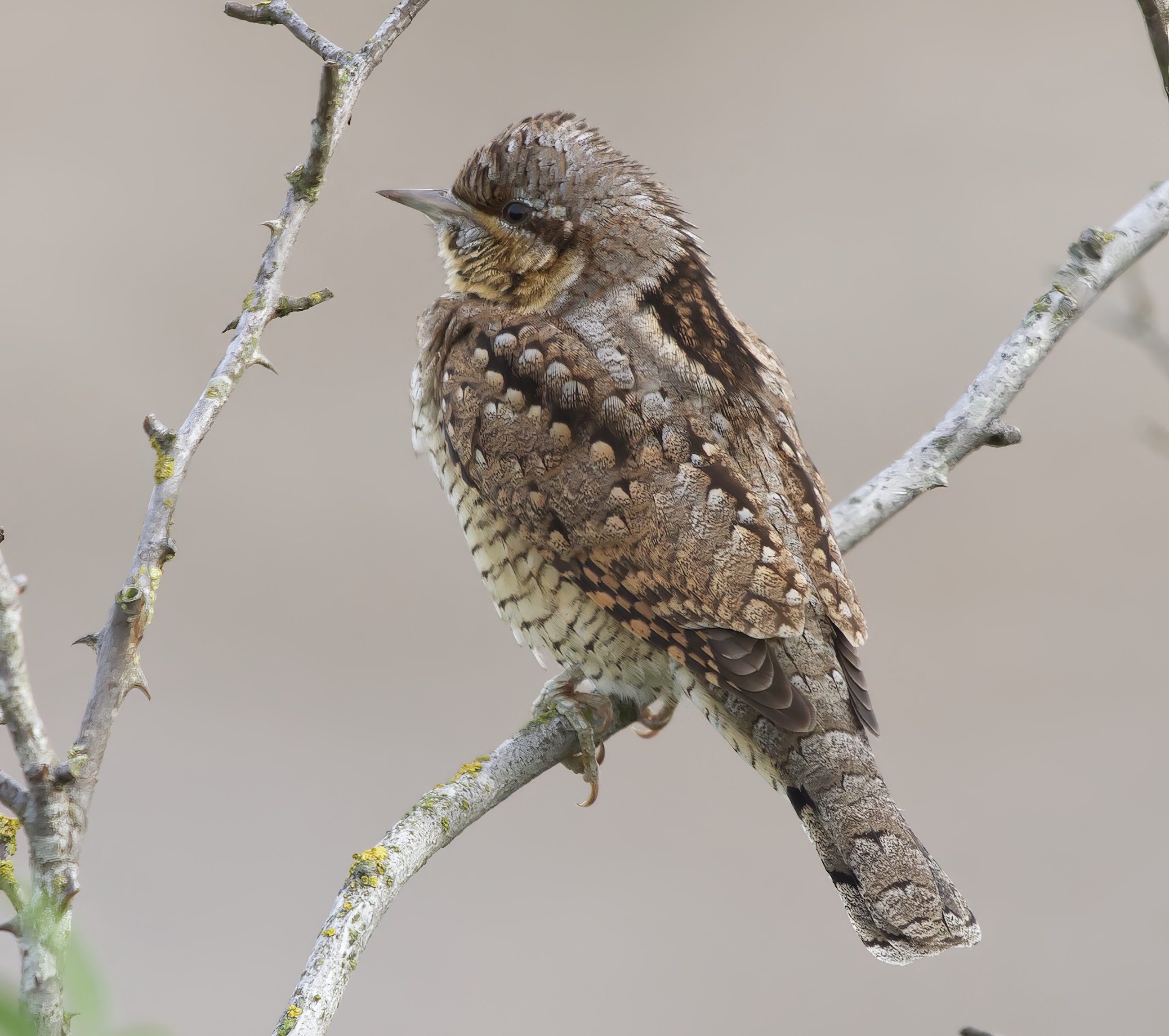Wryneck Jynx torquilla
Rare/ scarce passage migrant April-May and August-October, mainly coastal. Bred to early 20th century.



Wryneck was always a local breeder in Lincolnshire and in the 19th century it was absent from the north-east and it wasn't recorded on passage by Cordeaux (1872). Lorand and Atkin (1989) quote Blathwayt suggesting it was a scarce breeder in woodlands in the south-west. The last confirmed breeding record was reported in 1914 but it may have bred in the Lincoln area up to 1918. Smith and Cornwallis (1955) reported only four records in the 20 years previous. It became a much commoner passage migrant in the 20 years to 1989 but has subsequently become much scarcer. Since 2000, LBR notes 16 spring records (April 10th-May 29th) and 61 autumn records (August 17th-October 29th). An exceptional 12 were seen at Donna Nook, on August 20th 1977, but the most in one autumn was in 2015 when there were 16, all in the 15-day period August 23rd-September 6th, with seven at Gibraltar Point NNR. Occasionally late birds have lingered into October and one of the latest on record is one on October 17th, year and site not specified (Smith and Cornwallis, 1955). The majority have been coastal but there have been sporadic inland records often in observers back gardens.
(Account as per new Birds of Lincolnshire (2021), included October 2022)
